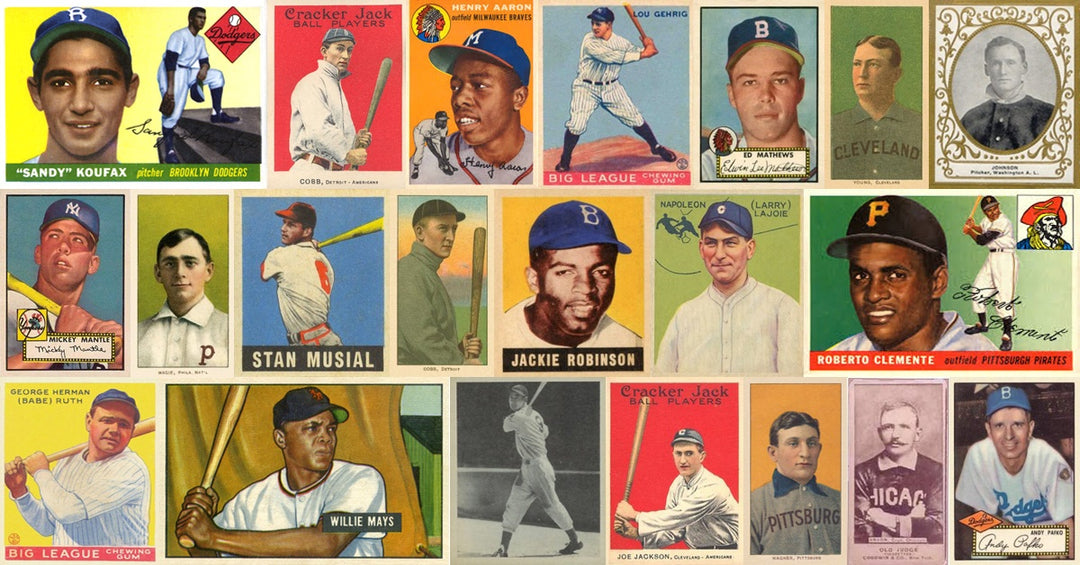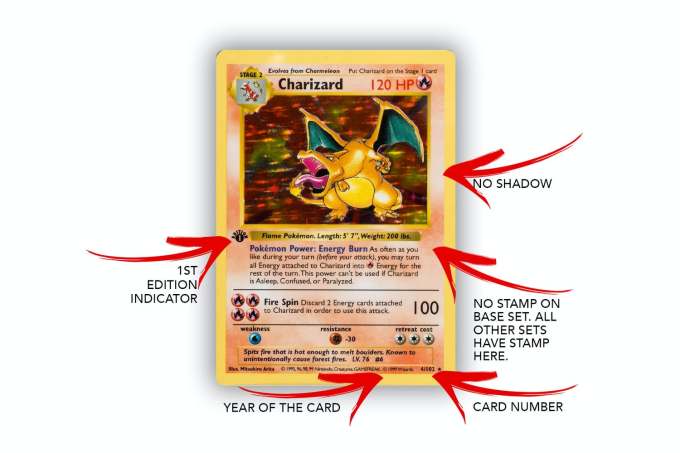How To Tell If Baseball Cards Are Worth Anything?

Are you a baseball fan who wants to find out if your collection of baseball cards is worth anything? Well, you’ve come to the right place! In this article, we’ll explore the ins and outs of determining the value of baseball cards. Whether you’re a seasoned collector or just starting out, knowing how to identify valuable cards can make all the difference.
Baseball cards have been a beloved collectible for decades, with some cards fetching astronomical prices. But how can you tell if your cards are worth anything? Don’t worry, we’ve got you covered. We’ll dive into the world of baseball card appraisal, examining key factors such as rarity, condition, and demand. By the end of this article, you’ll be equipped with the knowledge to assess your collection and potentially uncover some hidden gems.
So, dust off those shoeboxes filled with cards and get ready to embark on a journey of discovery. It’s time to find out if your baseball cards are worth anything!
- Check the Condition: Inspect the card for any damage, such as creases, stains, or discoloration. Mint condition cards are usually more valuable.
- Research the Player: Look up the player’s career statistics, achievements, and popularity to determine their significance in the baseball world.
- Check Rarity: Some cards are more limited in production, making them more valuable. Research the card’s edition and print run.
- Consult Price Guides: Utilize reputable price guides or online platforms to find the current market value of specific baseball cards.
- Consider Grading: Professional grading can authenticate and assess the condition of a card, influencing its value.

How to Tell if Baseball Cards Are Worth Anything?
Baseball cards have been a beloved collectible for decades, attracting both passionate collectors and casual enthusiasts. Whether you’re a seasoned collector or just starting out, one crucial aspect of the hobby is determining the value of baseball cards. So, how can you tell if those cards gathering dust in your attic are worth anything? In this article, we will delve into the key factors that determine the worth of baseball cards and provide you with valuable insights to help you assess their value accurately.
Historical Significance and Rarity
The historical significance and rarity of a baseball card play a significant role in determining its value. Cards featuring legendary players from iconic moments in baseball history are highly sought after by collectors. The scarcity of a particular card can also drive up its value. For example, limited edition cards, cards from a specific era, or cards with printing errors can be highly valuable due to their rarity. It’s essential to research the history and background of the card you own to understand its significance and rarity.
When assessing the rarity of a baseball card, factors such as production numbers, availability in the market, and the card’s condition come into play. The fewer cards produced, the higher the value. Moreover, if a card is difficult to find in good condition, its value may increase further.
Condition and Grading
The condition of a baseball card is a crucial factor in determining its worth. Collectors and buyers place great importance on cards that are in excellent condition, as they are more visually appealing and tend to retain their value better. Common factors that affect a card’s condition include its corners, edges, surface, and centering. Any signs of damage, such as creases, stains, or fading, can significantly impact a card’s value.
To assess the condition of a baseball card accurately, collectors often rely on professional grading services. These services evaluate the card’s condition on a scale and assign it a grade. The most widely recognized grading company is Professional Sports Authenticator (PSA). Higher grades indicate better condition, thereby increasing the card’s value. It’s worth noting that even slight differences in grade can lead to substantial variations in price.
Momentous Player Achievements and Popularity
The achievements and popularity of the players featured on baseball cards also contribute to their value. Cards depicting players who have made significant contributions to the sport or have achieved remarkable milestones tend to be highly sought after by collectors. For example, rookie cards of legendary players, cards commemorating record-breaking moments, or cards featuring players inducted into the Baseball Hall of Fame can command high prices.
Additionally, the popularity of a player can influence the value of their cards. Players who have a large and devoted fan base are likely to drive up demand and, consequently, the value of their cards. The market for cards featuring current star players or baseball icons from different eras remains robust.
Market Demand and Trends
The value of baseball cards is ultimately determined by market demand and trends. The dynamic nature of the collectibles market means that card values can fluctuate based on factors such as current trends, collectors’ preferences, and the overall state of the economy. Certain cards may experience a surge in demand due to factors such as a player’s exceptional performance, increased media attention, or a renewed interest in a particular era.
Moreover, the growth of online marketplaces and auction platforms has made it easier for collectors to buy and sell baseball cards. Access to a global market has increased competition, and high-demand cards can command significant prices. Keeping an eye on market trends, attending card shows, and staying informed about the hobby can help you assess the value of your baseball cards more effectively.
Research and Appraisal
To determine the value of your baseball cards accurately, it’s crucial to conduct thorough research and seek professional appraisals when necessary. Online resources, price guides, and collector forums can provide valuable insights into the current market value of specific cards. Comparing similar cards and recent sales can give you an idea of what collectors are willing to pay.
In some cases, seeking the expertise of professional appraisers or reaching out to reputable card dealers can provide you with a more accurate assessment of your cards’ worth. Appraisers and dealers have extensive knowledge and experience in the industry and can help you navigate the complexities of card valuation.
Preserving and Protecting Your Collection
Whether your baseball card collection has significant monetary value or sentimental value, it’s essential to take steps to preserve and protect your cards. Investing in high-quality card sleeves, binders, or storage boxes can prevent damage from moisture, light, and dust. Keeping your collection in a cool and dry environment can also help maintain its condition.
Consider using Vanity Slabs holders, the best in trading card protection. These holders are specifically designed to safeguard your valuable cards and prevent them from deteriorating over time. Vanity Slabs offers a wide range of holders and accessories to meet the needs of every collector. Find out more about their products at https://www.vanityslabs.com/.
In conclusion, understanding the factors that determine the value of baseball cards is crucial for collectors and enthusiasts. By considering the historical significance, rarity, condition, player achievements, market demand, and conducting thorough research, you can gain a better understanding of the worth of your baseball card collection. Remember to protect your cards using high-quality holders and enjoy the journey of discovering the hidden gems within your collection.
Key Takeaways: How to Tell if Baseball Cards Are Worth Anything?
- Check the condition of the baseball card – damaged cards are worth less.
- Research the rarity of the card – cards with limited quantities are more valuable.
- Look for popular players – cards featuring famous players tend to be worth more.
- Consider the age of the card – older cards are often more valuable.
- Consult price guides or experts – they can provide insights on card values.
Frequently Asked Questions
1. What are some indicators that a baseball card is valuable?
When determining the value of a baseball card, there are several key indicators to look for:
First, consider the player featured on the card. Cards of legendary players such as Babe Ruth, Mickey Mantle, or Jackie Robinson tend to be more valuable. Additionally, cards from a player’s rookie year or cards that are part of limited edition sets are often worth more.
Second, examine the condition of the card. Cards in mint condition, free from any creases, stains, or discoloration, are generally more valuable. The card’s corners and edges should be sharp, and the surface should be clean and glossy.
2. Are there specific card brands that are more valuable?
Yes, certain card brands have gained a reputation for producing more valuable cards. Some of the most sought-after brands include Topps, Bowman, and Upper Deck. These brands have a long history in the baseball card market and are known for their quality and collectability.
It’s worth noting that within each brand, there may be specific sets or editions that are particularly valuable. Researching the market and consulting price guides can help you identify these valuable card brands and editions.
3. How can I determine the rarity of a baseball card?
The rarity of a baseball card plays a significant role in its value. Here are a few ways to determine a card’s rarity:
Check for serial numbers: Some baseball cards have unique serial numbers printed on them, indicating their limited production. Lower serial numbers generally indicate higher rarity.
Look for special edition or parallel cards: These cards often have distinct designs or color variations and are typically produced in smaller quantities.
Consider the card’s production year: Older cards are often harder to find in good condition, making them rarer and more valuable.
4. Can the demand for a player affect a baseball card’s value?
Absolutely. The demand for a player can have a significant impact on the value of their baseball card. Factors that can influence demand include the player’s popularity, achievements, and overall performance.
For example, a player who has recently broken records, won awards, or gained widespread recognition is likely to have increased demand for their cards. Similarly, if a player becomes a fan favorite or is highly regarded within the baseball community, their cards may become more sought after.
5. Are there any online resources to help determine the value of baseball cards?
Yes, there are several online resources that can assist in determining the value of baseball cards:
Websites such as PSA (Professional Sports Authenticator) and Beckett provide comprehensive databases and price guides for various baseball cards. These resources allow you to search for specific cards and view their estimated values based on factors such as player, condition, and rarity.
Additionally, online marketplaces such as eBay and COMC (Check Out My Cards) can give you a sense of the current market value for specific baseball cards by showing the prices at which similar cards are being bought and sold.
How to find Sports Card Values – Baseball, Football, Basketball & Hockey
Final Thoughts
So, you’ve dug out your old baseball card collection and now you’re wondering if those cards are worth anything. Well, fear not! Determining the value of baseball cards is not as daunting as it may seem. By following a few key indicators, you can quickly assess whether your cards hold any significant monetary value.
One important factor to consider is the card’s condition. Mint condition cards, free from any creases, stains, or discoloration, are often the most valuable. Additionally, the scarcity and popularity of a particular card can greatly impact its worth. Limited edition or rookie cards of well-known players tend to fetch higher prices in the market.
Another crucial aspect is the card’s authenticity. Counterfeit cards are more common than you might think, so it’s essential to verify the legitimacy of your collection. Look for official licensing marks, holograms, or identification numbers that authenticate the cards. Consulting reputable price guides or getting your cards appraised by professionals can also provide valuable insights into their potential value.
Remember, assessing the worth of baseball cards can be a thrilling journey. Whether you stumble upon a hidden gem or simply rediscover cherished memories, the process is bound to be an enjoyable one. So, roll up your sleeves, inspect those cards, and who knows? You might just strike gold in your very own collection.






